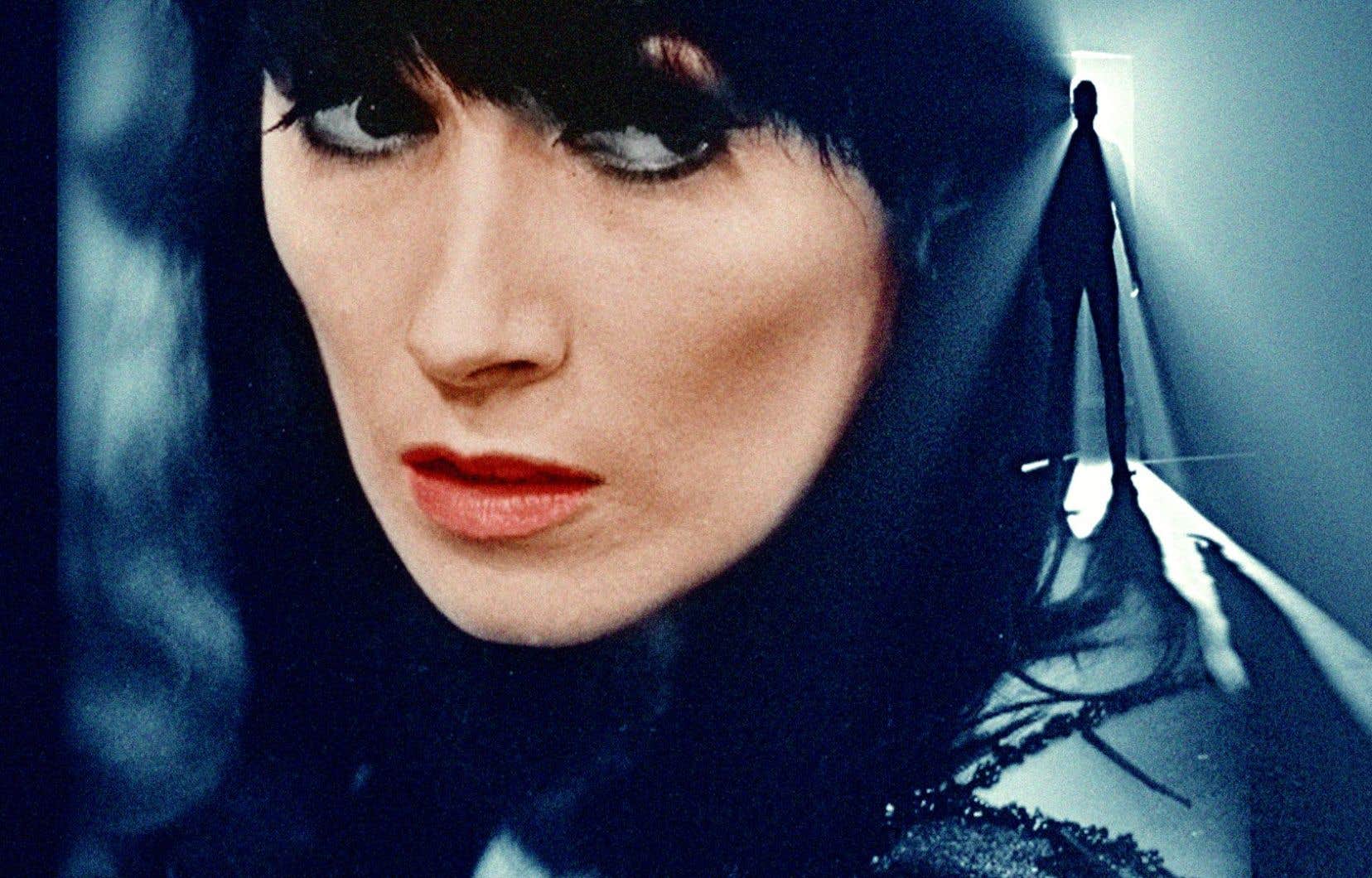It was before Stat And Double occupationbefore Netflix and its series binger and to catch up: when Radio-Canada broadcast its creative tele-theaters. “I was amazed, as an artist in my mid-thirties, to discover this part of our culture,” explains Larissa Corriveau. It’s great art TV, with Hubert Aquin and Louis-Georges Carrier showing in a completely experimental way Federico García Lorca, Marcel Dubé or Anton Chekhov, at prime time. » From the archives of her friend, the actress Monique Miller, Larissa Corriveau put together the installation human voicesabout our increasingly forgotten TV past.
In a dark room, like an anonymous theater, luminous cables form a robotic brain: that of Monique Miller, 89 years old. From there, extracts from the TV films in which the long-time actress has appeared, as well as original sequences and recent telephone conversations, are deployed on six screens of different formats, in a narration with a surrealist taste.
We hear Monique Miller there today. “I never dreamed of playing a role. Never. Have you seen the roles I’ve had? Why would I dream? As I started very young, I got the roles [quand j’étais] very young, tse. »
“The Monique Miller phenomenon fascinates me,” explains Larissa Corriveau. If we know her mainly as an actress (in the cinema for Denis Côté and Stéphane Lafleur; in the theater for Marie Brassard or Philippe Boutin), Mme With this installation, Corriveau nourishes his career as a multidisciplinary artist.
It is in the living room wallpapered with Monique Miller’s stage photos and theater posters that The duty collected the words of the two artists, who met while playing Richard III at the Théâtre du Nouveau Monde (TNM), in 2015.
Monique, as an actress, is a pretext in this mediation on time, memory and what remains of the characters we played and created. Where do they stay? In U.S ? Or only in the archives?
“Monique, as an actress, is a pretext in this mediation on time, memory and what remains of the characters we played and created. Where do they stay? In U.S ? Or only in the archives? »
From creative cock to donkey
Inspired by video Jean Cocteau addresses the year 2000Larissa Corriveau first wrote a short monologue for Monique Miller who would speak to people of the future.
“I recorded it here,” M interrupts.me Miller. The two women, throughout the discussion, repeat, divert, bring back and finish each other’s sentences. “Were we on the other side of the table there?” » “Yes,” replied M.me Corriveau, that’s it. » “Did you keep it in the film?” » “Yes,” replied M with a smile.me Corriveau, but it’s not a film, Monique. »
“And it degenerated,” continues Mme Corriveau. “I wanted it to be a short film, but Monique cannot fit into the two dimensions of a film. So, I wanted to multiply the Monique… and she lent me her TV film archives… and, there, I discovered a world…”
“How many TV films do you have there?” » asks Mme Miller. “At least 40,” replies Larissa Corriveau. ” That much ? So much the better. Did I give you Inquisition, with Claude? Claude Léveillé,” continues Mme Miller, turning to the journalist: “We forget him, but he was a damn good actor. We were married. For five years. »
Talking about Pirandello on rue Panet
Listening to these TV films was a shock for Larissa Corriveau. “For me, who did not experience those years, it is downright science fiction to think that I can open the TV in the evening and come across an adaptation by Leonid Andreïev in a completely innovative production. »
It was the 1950s-1970s. Monique Miller remembers: ““Mme Joblo” on rue Panet, not far from Radio-Canada, when I came out and walked, she stopped me to talk to me about the Pirandello she had just listened to. » Because it was often live, recall the two women, with the risks that that entails.
“When we saw that, we cannot deny that there is a kind of “decline” in television culture,” reflects Mme Corriveau. “My desire is not to make a manifesto work that blames the degeneration of television content, but this observation is being made. »
“It was a really avant-garde gang of artists…” she continues. “…Especially Paul Blouin…”, underlines Mme Miller, “…who pushed the technological limits of staging and camerawork,” continues Mme Corriveau. “They were great actor directors, too,” returns Mme Miller. “We all played in theaters, too, so when we did The Three Sisters, we rehearsed from 11 p.m. to 2 a.m. We would no longer be allowed to do that today. »
The writings remain
These TV offerings are a little dated, says Larissa Corriveau, “but they are great texts and great interpretations. Today we no longer play that way, we are not taught to play that way. It had a lot to do with the way the text was said. It changed. »
So, after all this time, all these roles, all the characters you have played, what do you have left, Mme Miller?
« By Victor Lévy-Beaulieu and his Montreal PQ., I still have this couch, she points out pragmatically. I couldn’t learn my text anywhere other than on that couch, I’m so damned about it. The lyrics were wonderful; the sets and costumes, too. »
“These two chairs, too, remain with me,” continues M.me Miller. These are those of Ionesco: Gilles there, and me, here. Once a week, we started memorizing the text together,” she says, speaking about the piece. The chairsmounted at TNM in 2018 with Gilles Renaud.
Objects, therefore, as souvenirs of characters.
